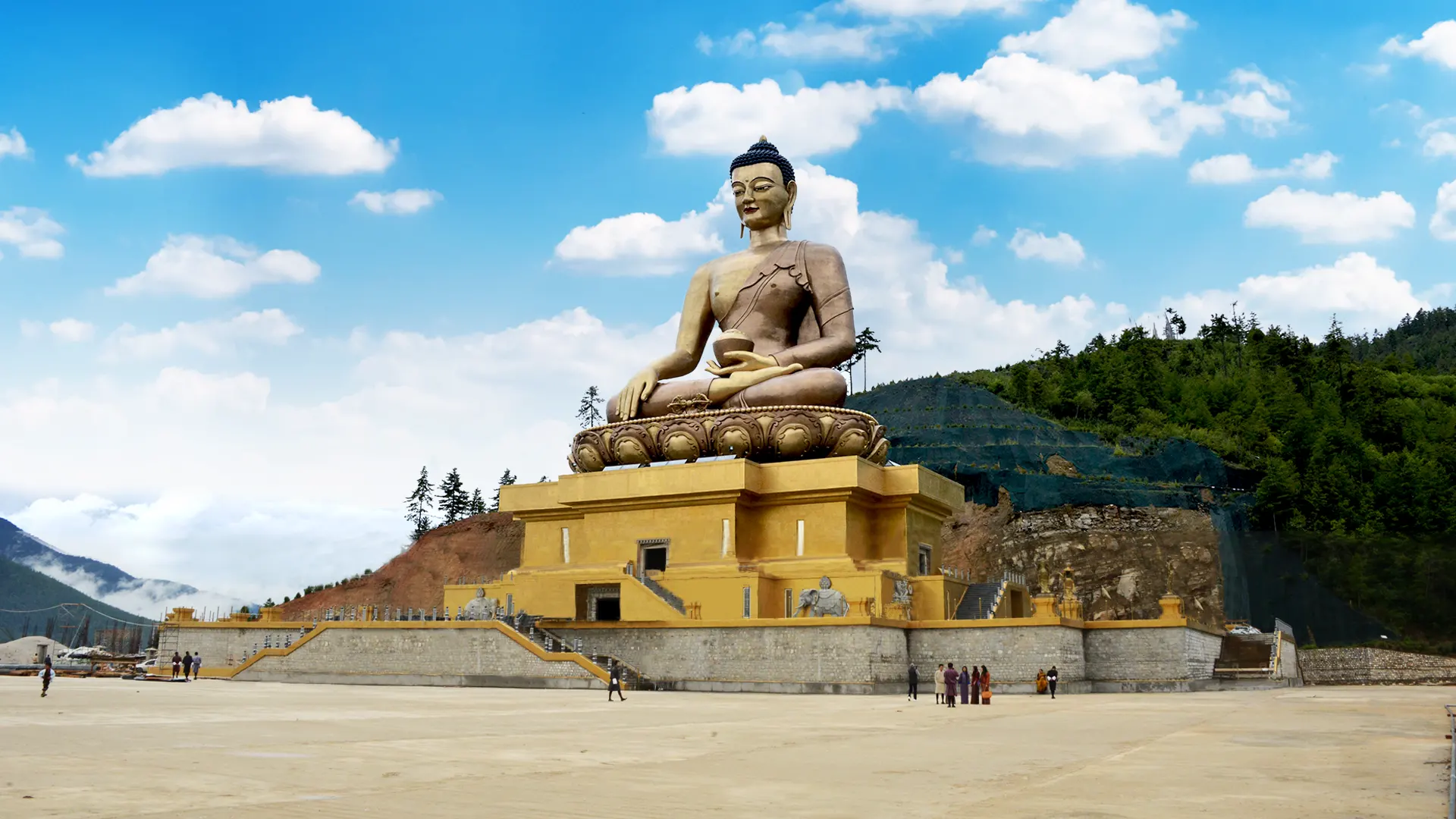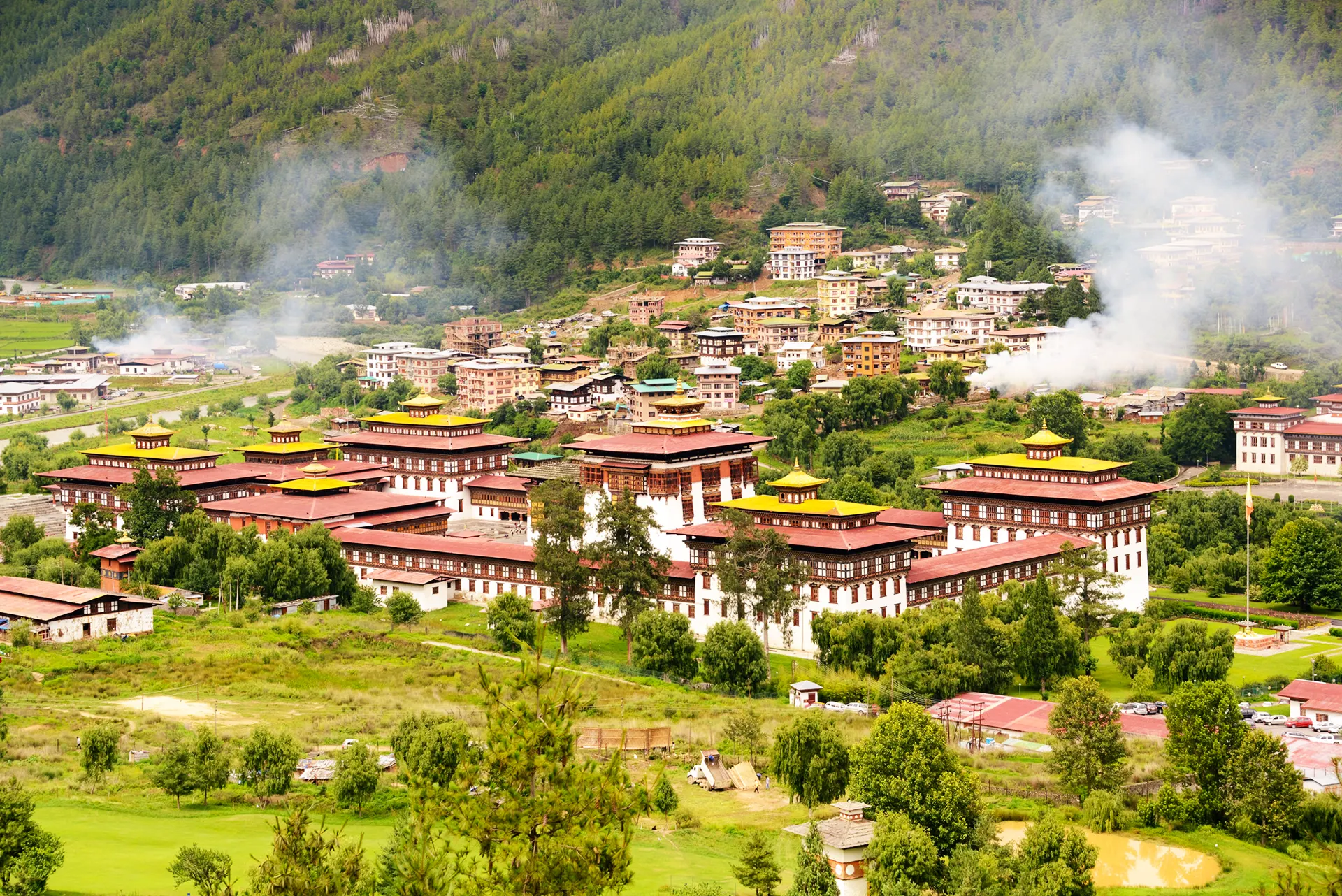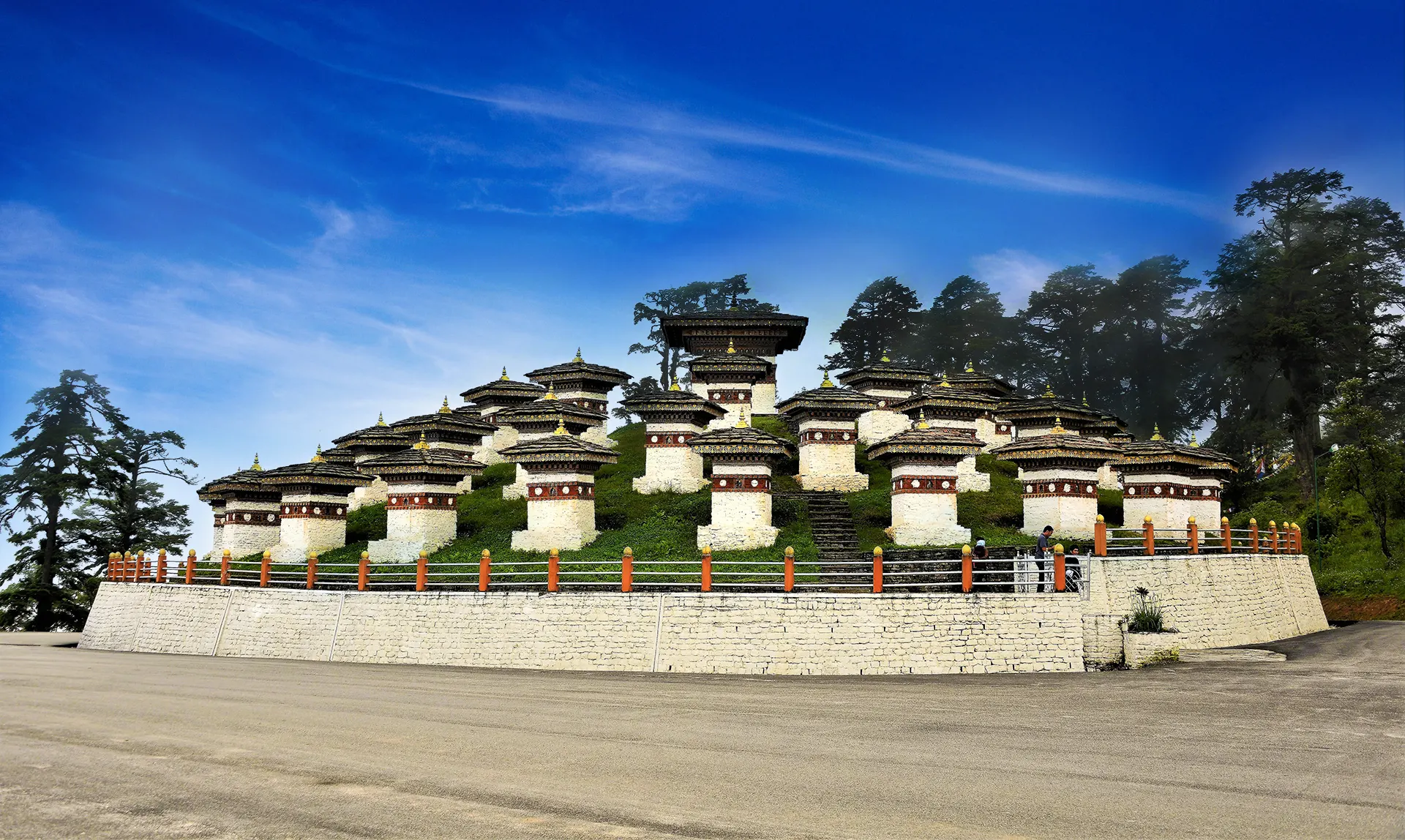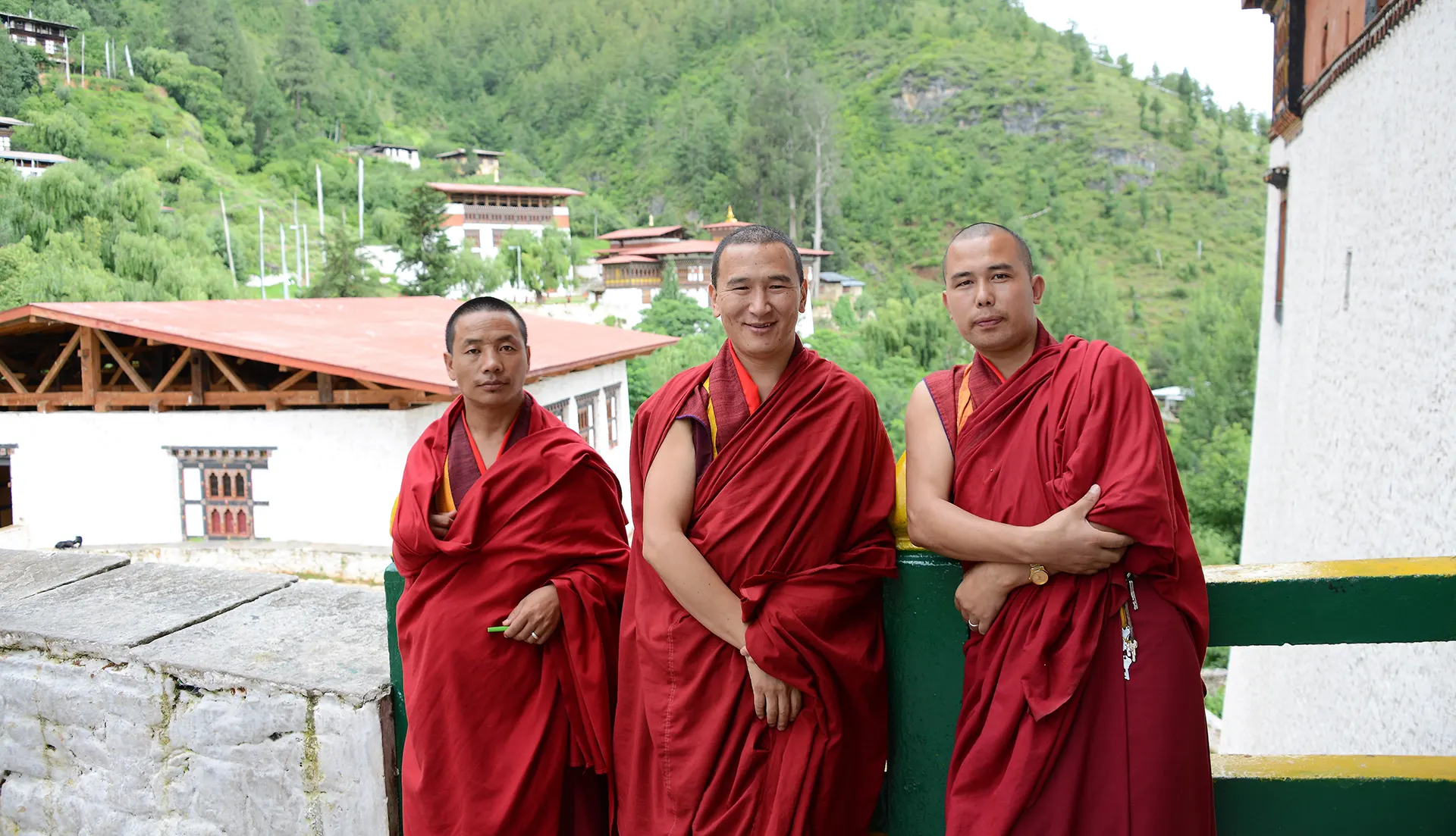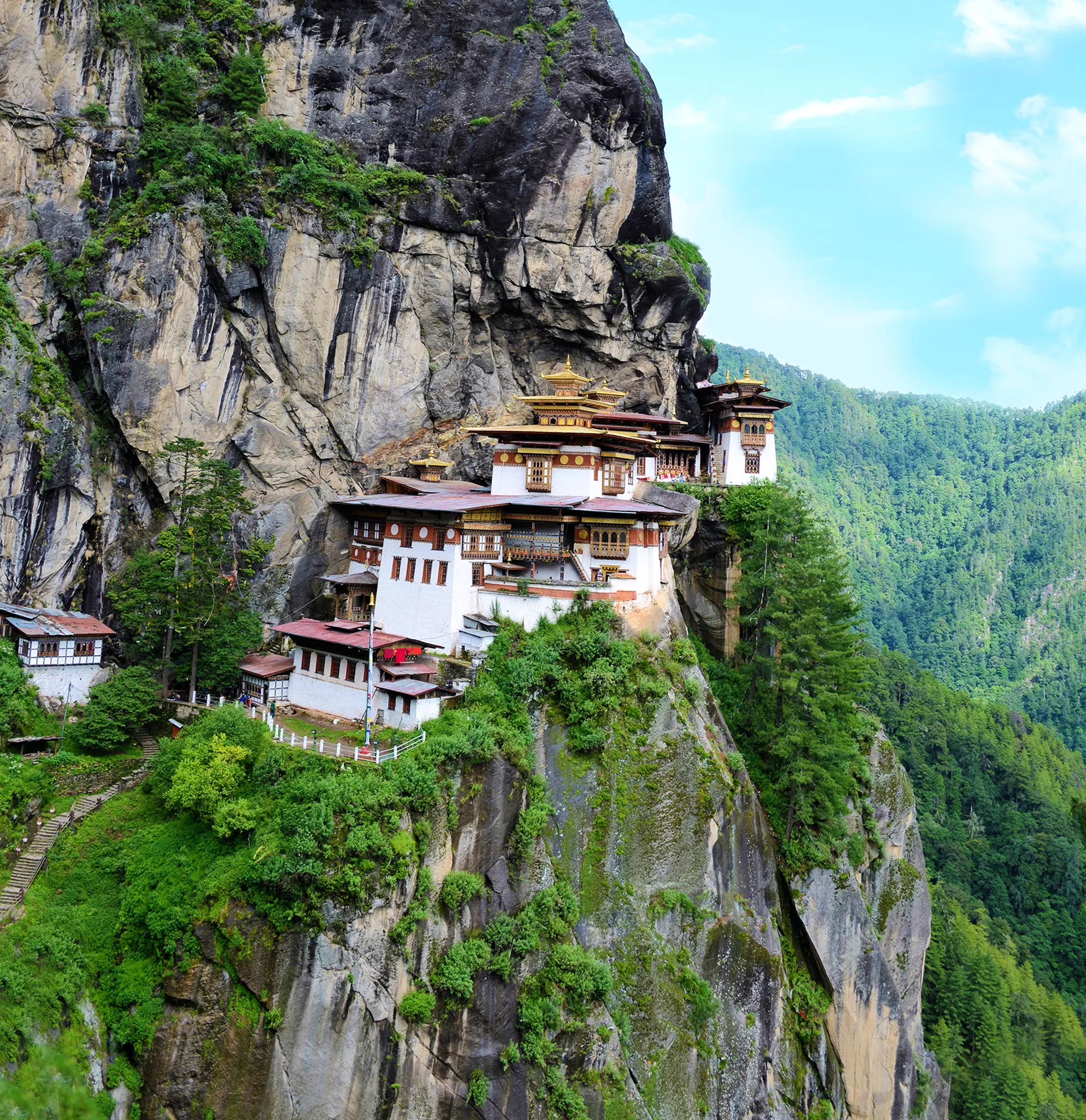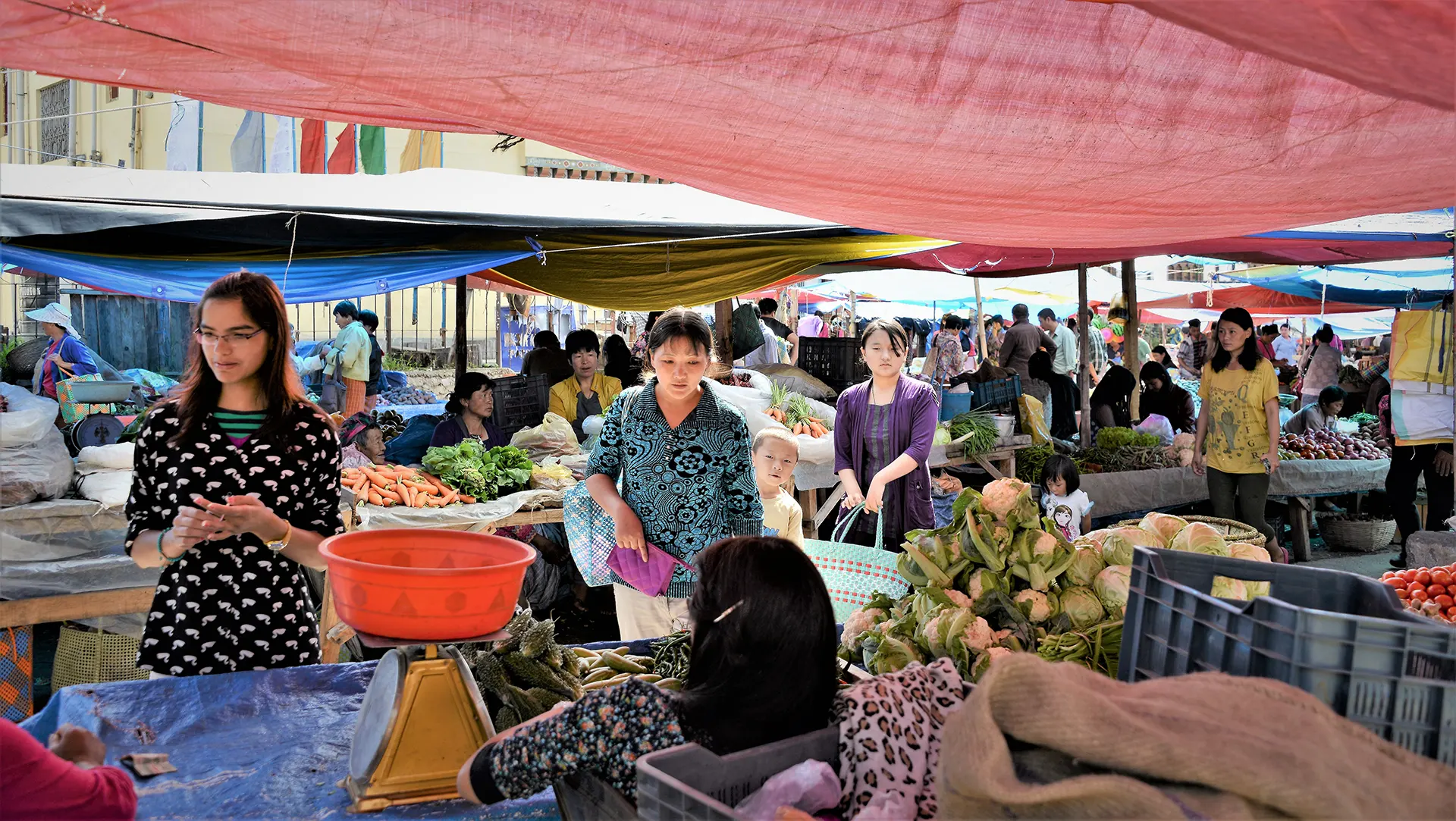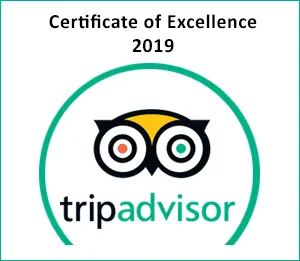Day 1: International Arrival – Paro – Thimphu.
Easy Tours will be happy to guide and/or assist you with planning your international flight logistics. The last part of your flight will possibly have offered you spectacular views of the tallest Himalayan Ranges. You are greeted at the Paro airport (it is a tiny airport and a fairly simple process) by your Bhutan Accompanying Tour Director and your chauffeur. They will both accompany you throughout your time in Bhutan. Your Visa for Bhutan is arranged by Easy Tours as part of your adventure with us.
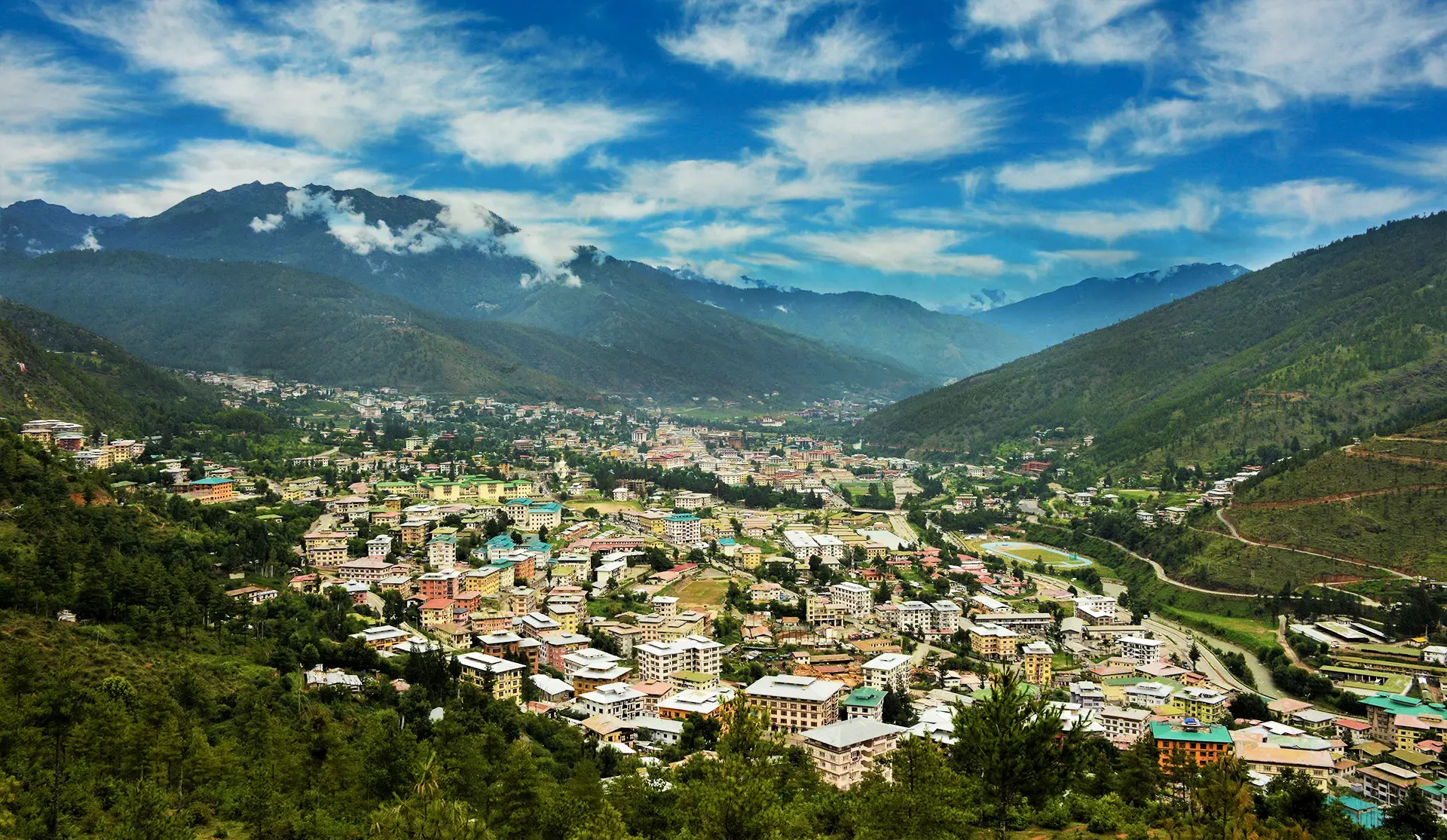
Thimphu, the largest town in Bhutan
Welcome to one of the last magical kingdoms on the planet, a peaceful country full of devout Buddhists who treasure GNH (Gross National Happiness), not GDP. Bhutan is a country without traffic lights, and the single traffic control (by a police officer) is at the intersection of the two busiest streets of Thimphu, the capital. Yet traffic is nothing like it is in most of South Asia, partially because there are less vehicles, but also because of the unfailing politeness and consideration of the Bhutanese.
Proceed on the 90-minute drive to Thimphu. Much of the drive you will be next to the gushing Thimphu River and Bhutan’s incredible scenery will start to captivate you. Your Tour Director Guide and your chauffeur in Bhutan will continuously entertain you with anecdotes that attribute events, things, and places to results of actions by one of their legendary Buddhist Sages from past centuries. A lot of unique and/or peculiar beliefs and practices are attributed to one of the greatest miracle workers of them all, The Divine Madman, Lam Drukpa Kuenley.
Arrive at Thimphu and you are assisted with your check in at your beautiful hotel. The Pemako Thimphu beautifully encapsulates the essence of Bhutanese architecture and tradition, blending seamlessly with modern luxury. It offers stunning views and the architecture is a striking fusion of traditional Bhutanese Dzong (fortress) design and modern elements, featuring intricate hand-painted motifs and wooden cornicing that reflect the rich cultural heritage of Bhutan. The hotel is strategically situated in the heart of Thimphu, making it an ideal base for exploring the city’s notable attractions.
The hotel's dining options showcase a blend of local and international cuisine, catering to diverse palates, while the Jiva Spa offers treatments inspired by traditional Indian wellness philosophies. Lunch is included at your hotel upon arrival. If it is a little before 3pm at this time, an early check-in may be possible, but is not guaranteed. For most of our South Asian destinations, we recommend a day at leisure upon arrival so as to both recuperate from your international flights, as well as to build a cushion for unexpected flight delays.
All 3 meals, including soft refreshments, are included at your lodging while in Bhutan.
Thimphu was just a dzong (fortress) surrounded by a few huts when it became the permanent capital of Bhutan in 1952. In pace with the tranquil passage of time in Bhutan, Thimphu has leisurely transformed into the city it is today. All the architecture in Thimphu is of traditional Bhutanese style because a royal decree demands that the city preserve the original national character of Bhutan’s architecture.
Late afternoon - you may want to relax for the remainder of this day so as to acclimatize yourself to the 8000 to 9000-foot elevation. If you feel the need for some activity, the charming town around your hotel is a delight to explore.
(Overnight – Pemako Thimphu)


